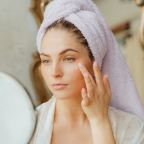
Skin cancer rates almost double in the South West
The South West has seen a dramatic increase in the number of people diagnosed with malignant melanoma, new figures from Cancer Research UK have revealed.
Over the last 20 years the rates of people diagnosed with malignant melanoma, the most serious form of skin cancer, has almost doubled in the region.
The results, which were revealed yesterday (Monday) are released as Cancer Research UK and NIVEA SUN launch their campaign to encourage people to enjoy the sun safely this summer. Their partnership offers simple advice and easy tips to help people have fun while taking sensible precautions to protect their skin.
The latest incidence rates show that around 21 people in every 100,000 are diagnosed with malignant melanoma in the South West annually. This is compared to just eleven per 100,000 in the early 90s.
This equates to around 1,500 people developing malignant melanoma in the South West every year. This marks a significant change since the early 1990’s when 600 people were diagnosed annually.
Malignant melanoma is now the fifth most common cancer in the UK and more than 2,000 people die from the disease each year.
Rates have been increasing dramatically across the UK since the mid 1970s and they are now five times higher than they were 40 years ago.
The rise is partly down to an explosion in package holidays to Europe dating from the late 60s and the increasing popularity of the “must-have” tan often achieved only after damaging sunburn.
The boom in sunbed use has also helped to fuel the increase in skin cancer and better detection methods may also have contributed to the increase in the number of people diagnosed.
Alison Birkett, Cancer Research UK spokesperson for the South West, said: “We know overexposure to UV rays from the sun or sunbeds is the main cause of skin cancer. This means, in many cases, the disease can be prevented, so it’s essential to get into good sun safety habits, whether at home or abroad.
“This is why we’ve joined forces with NIVEA SUN to raise vital awareness and funds for research. By following some simple tips and taking care not to burn – people can enjoy the sun much more safely this summer.
“One of the best ways people can reduce their risk of malignant melanoma is to avoid getting sunburn. We know that those with the highest risk of the disease include people with pale skin, lots of moles or freckles, a history of sunburn or a family history of the disease.
“Sadly more and more people in the South West are being diagnosed with malignant melanoma each year. But the good news is that survival is amongst the highest for any cancer. More than 8 in 10 people will now survive the disease.”
This summer, the Cancer Research UK and NIVEA SUN campaign will include a digital, radio and outdoor advertising campaign plus teams handing out hats and sunscreen on days when the sun is strong.
Barry Goode at NIVEA SUN said: “We’re incredibly proud to be supporting Cancer Research UK again this year. We all need a bit of sun to keep us happy and healthy, but the important thing is to enjoy it responsibly and safely.”
For more sun safety information from Cancer Research UK visit www.sunsmart.org.uk
Top Tips from Cancer Research UK and NIVEA SUN on protecting your skin this summer:
- Spend time in the shade if your shadow is shorter than you. If your shadow is shorter than you are, then the sun is strong. During the UK summer, the sun is at its strongest between 11am and 3pm.
- Wear a hat, T-shirt and sunglasses when the sun is strong. Wide brimmed hats or foreign legion style caps are best.
- Cancer Research UK recommends you use at least factor 15 sunscreen with a high star rating when the sun is strong. Apply sunscreen generously and reapply regularly to make sure you get the level of protection on the bottle.












